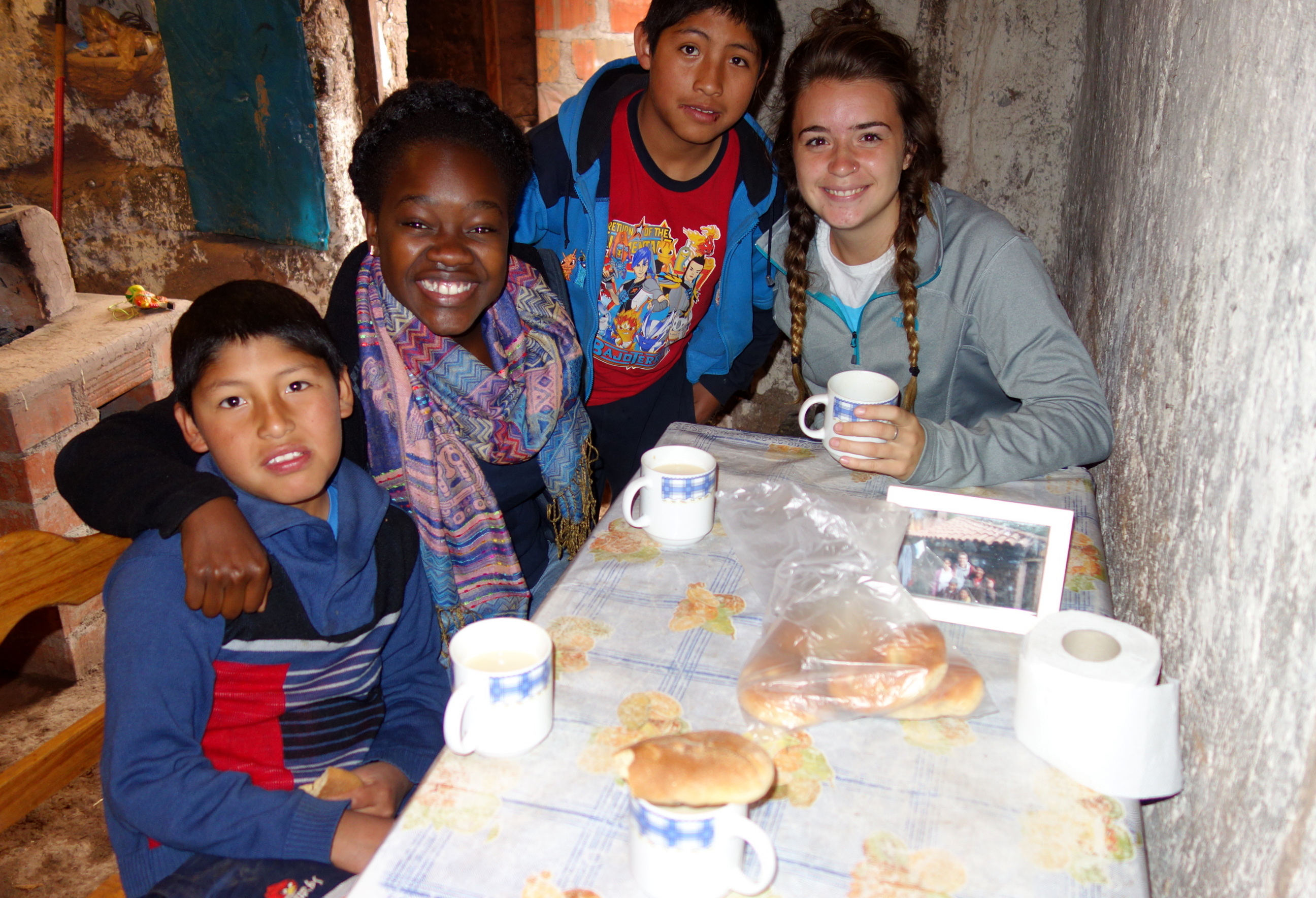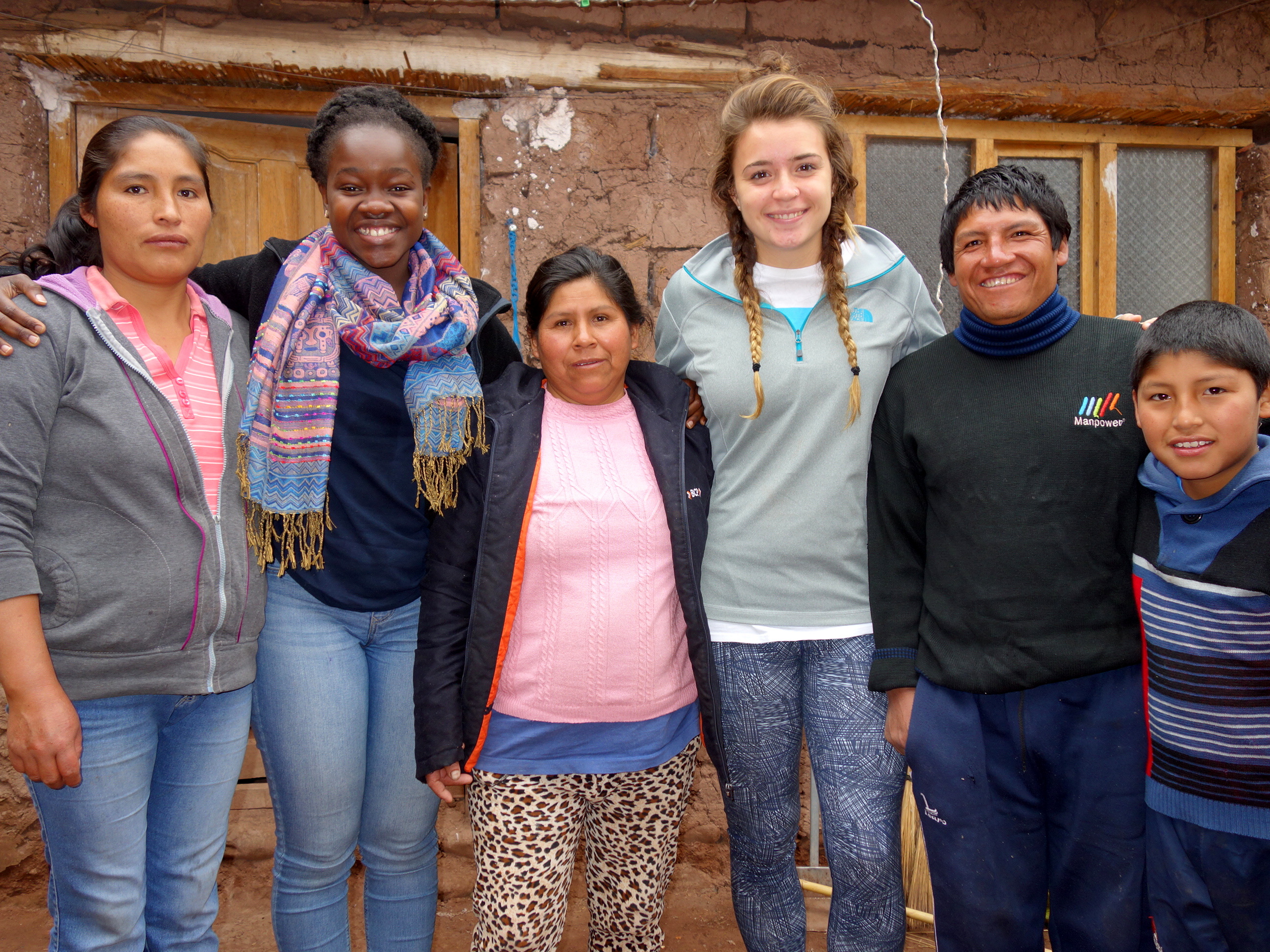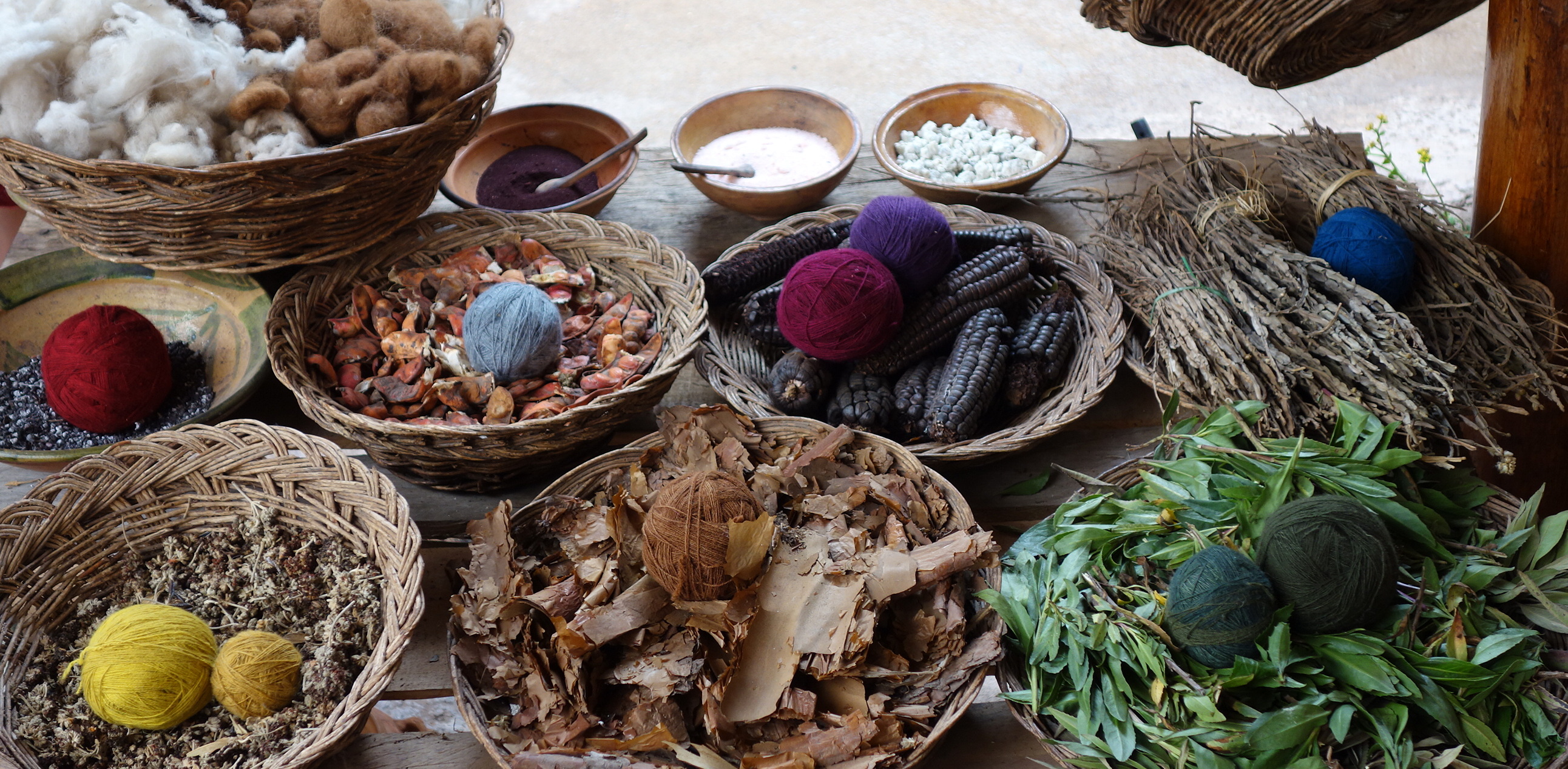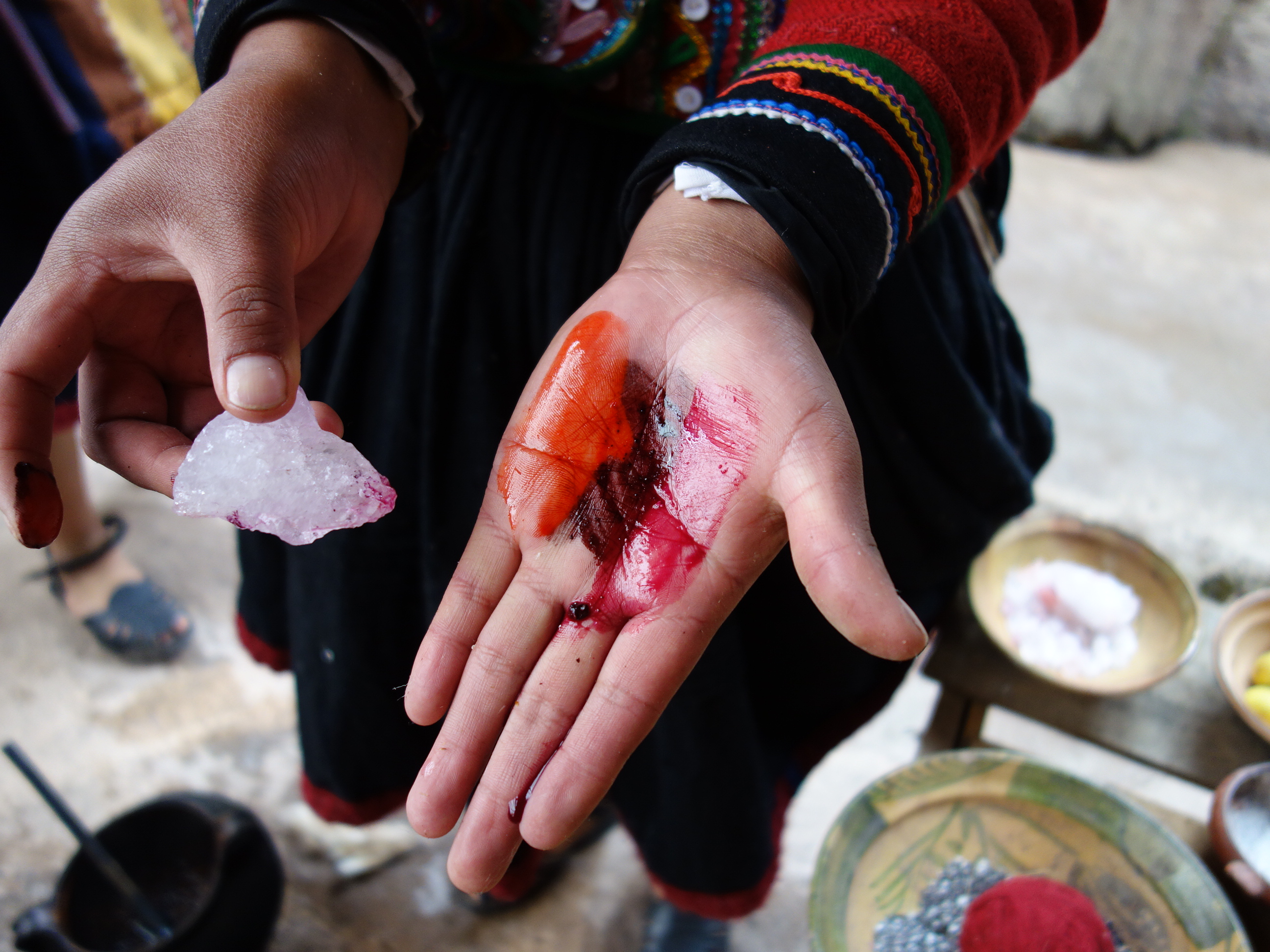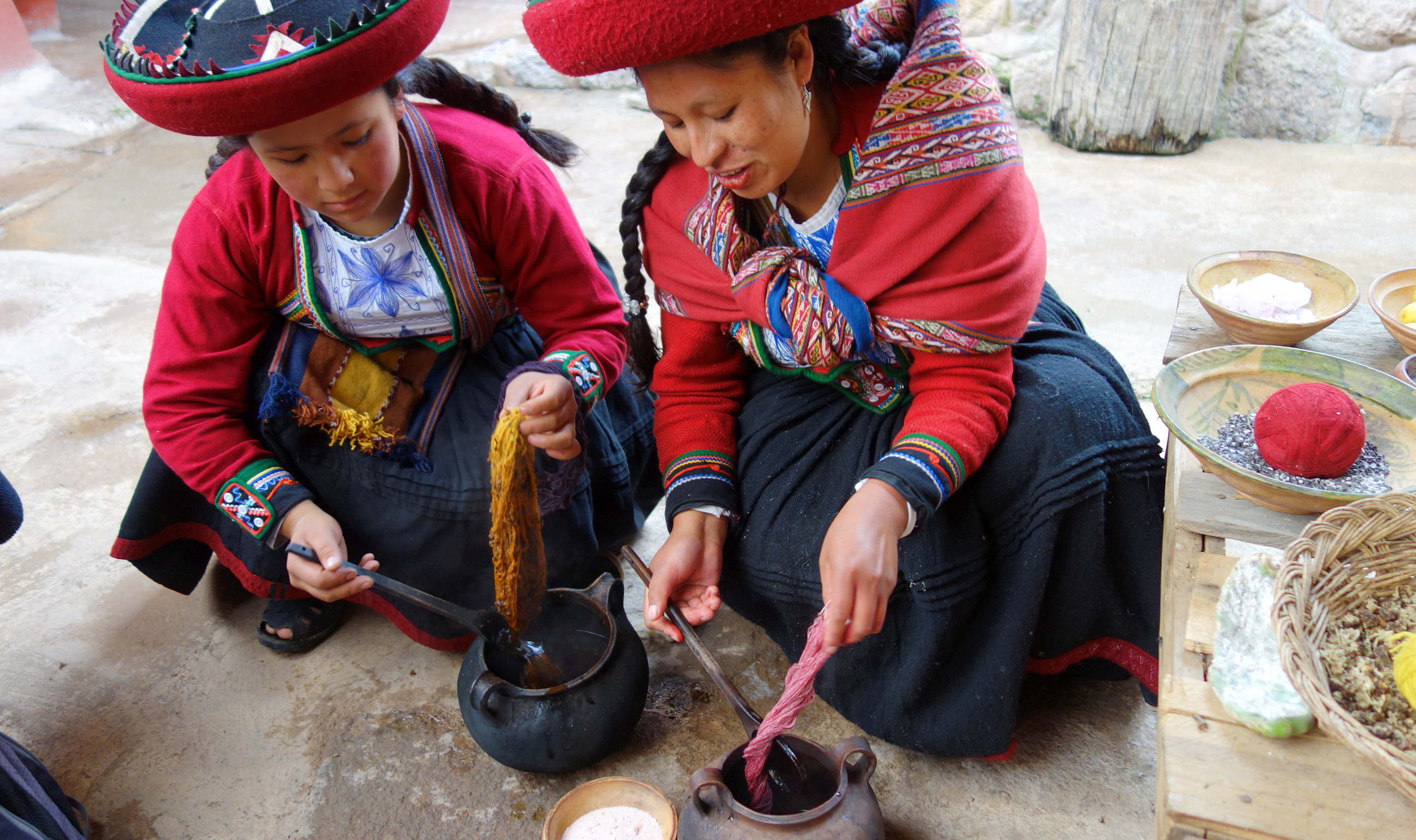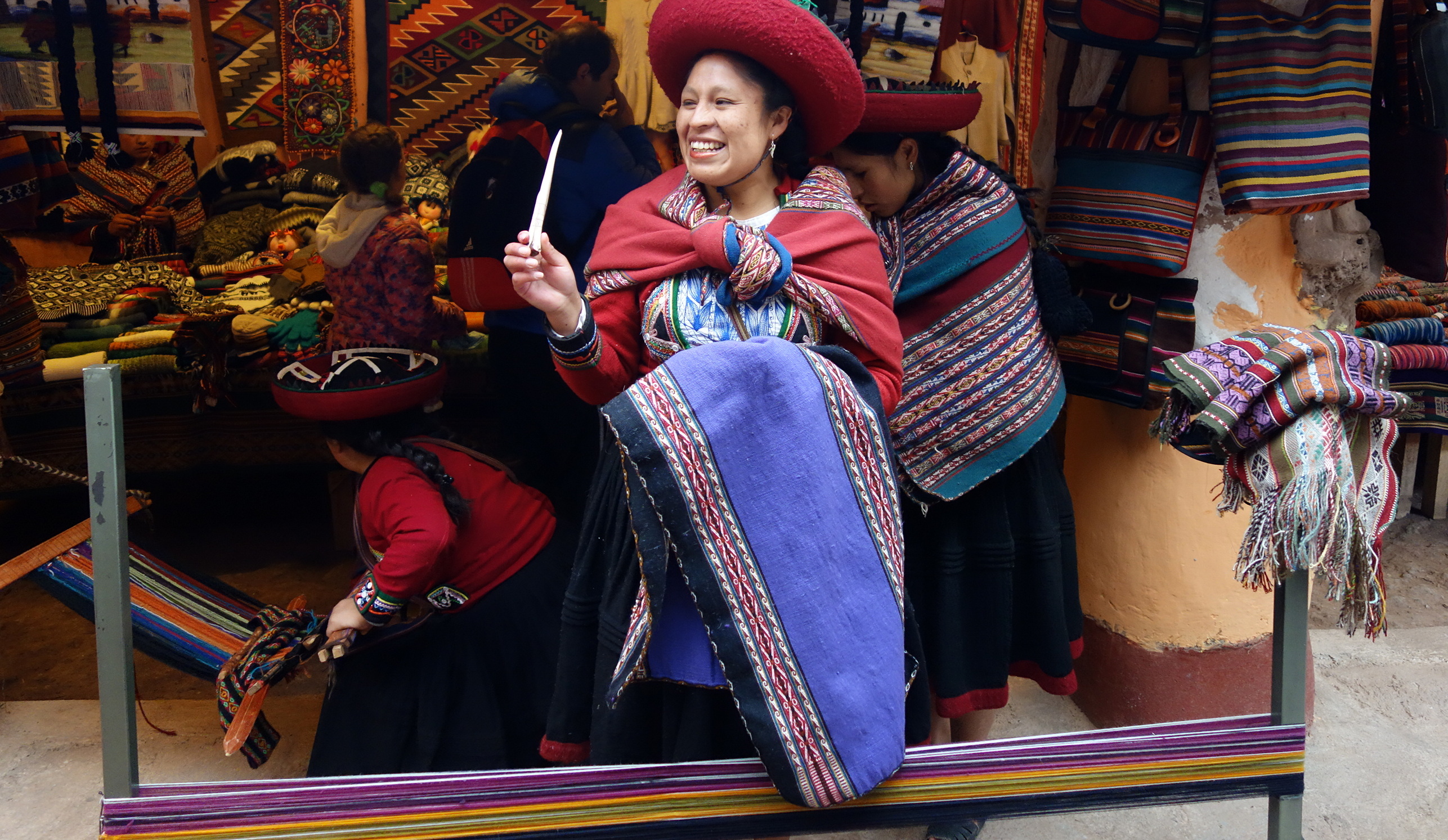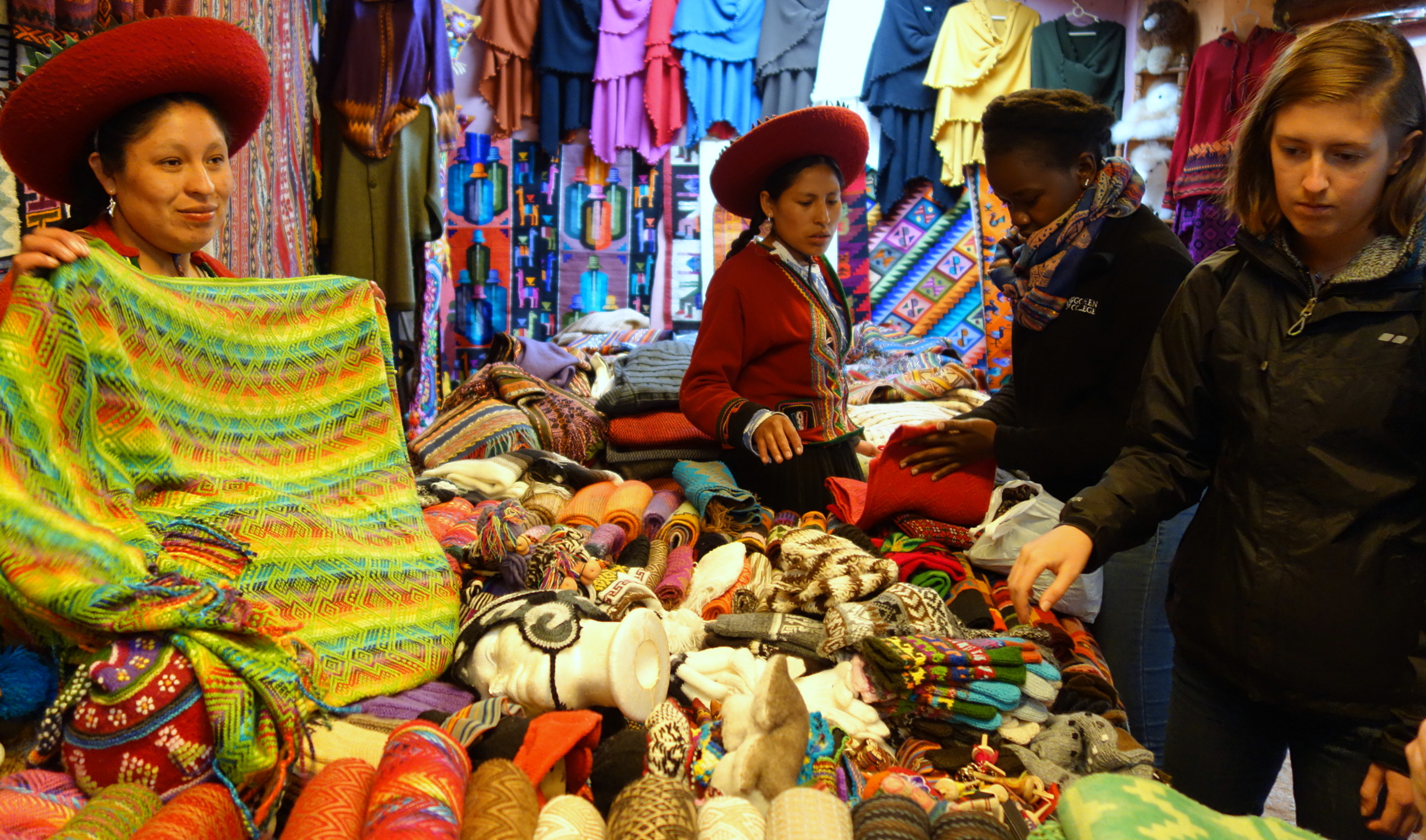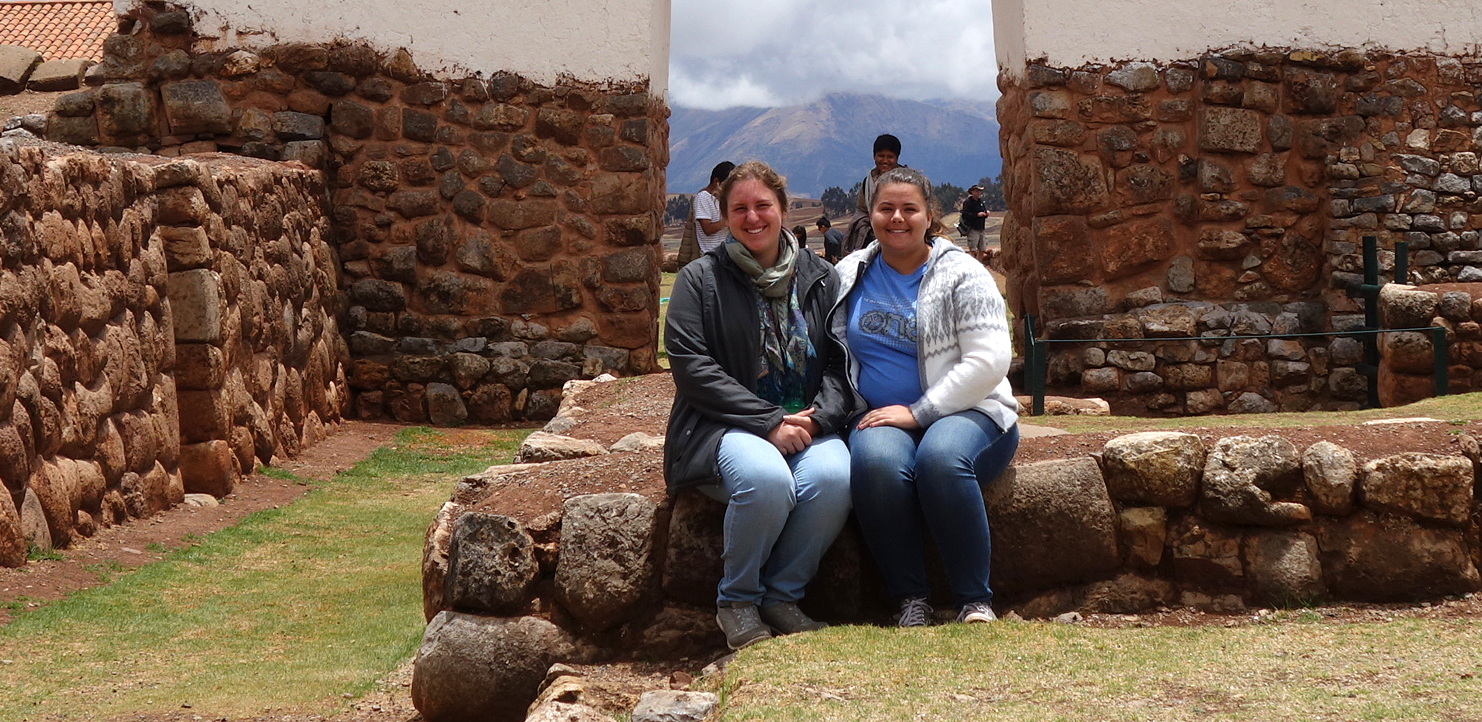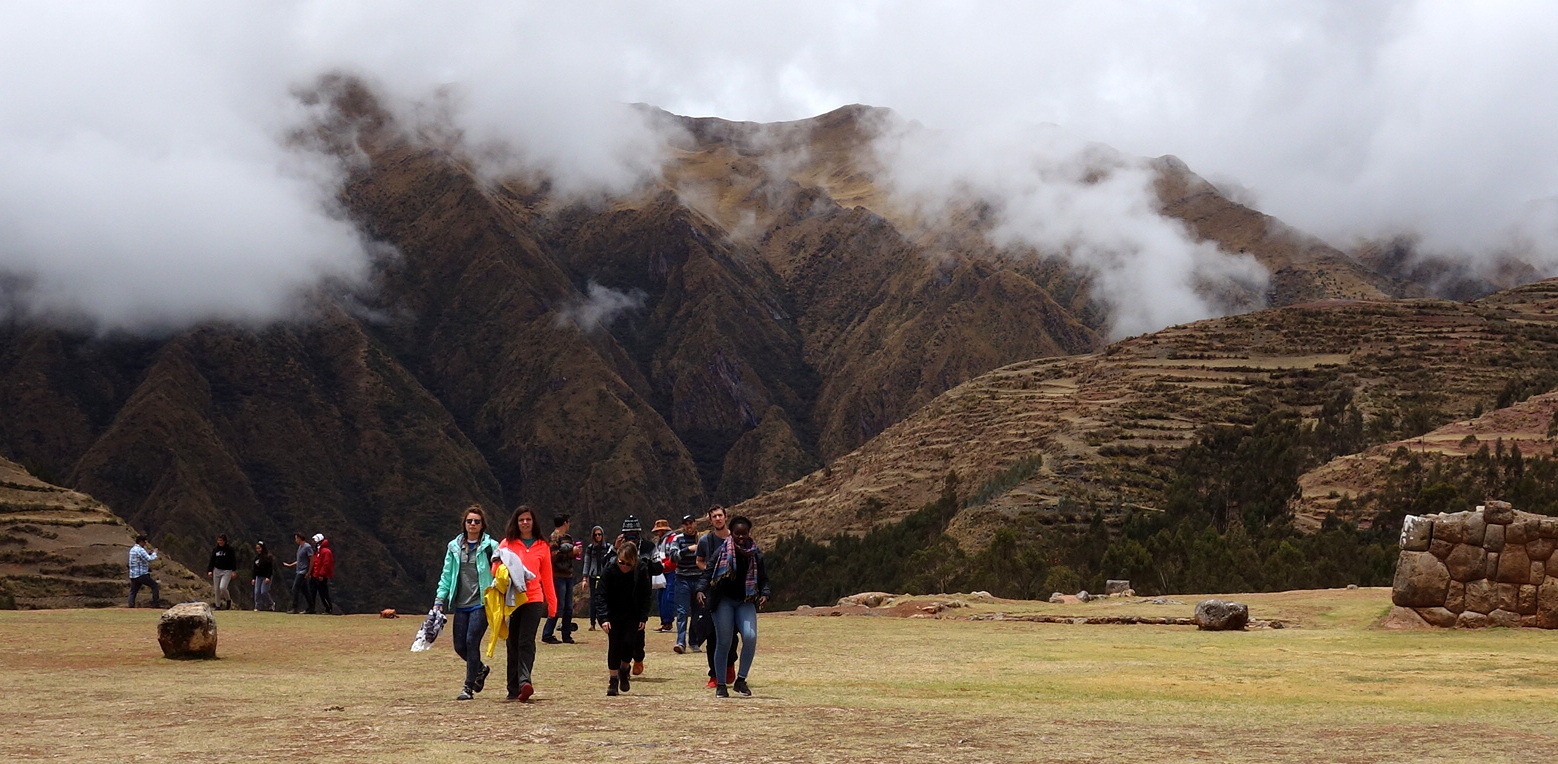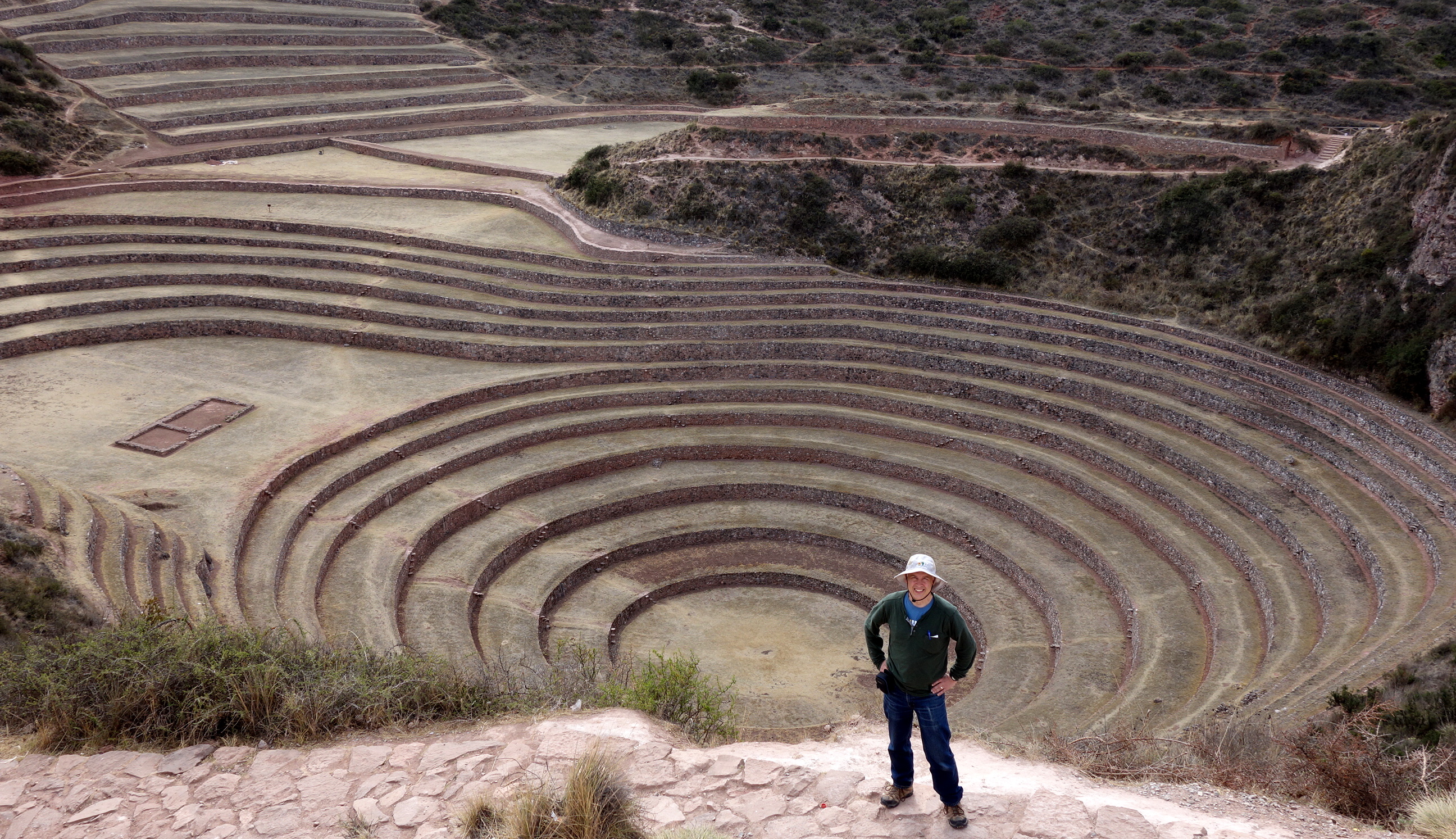Visit to a textile workshop and the ruins of Chinchero
Monday, Oct. 10
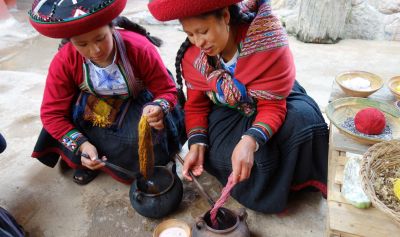
After breakfast and bidding adios to our Mennonite host families in Lucre and Huacarpay, we traveled to the small town of Chinchero. At many of the other tourist sites we had been impressed by vendors selling clothing with vibrant colors and designs. Here we had a workshop where local women showed us the entire process for making these fabrics, starting with the natural sources of the dyes and continuing to the loom.
The Incas described Chinchero as the birthplace of the rainbow. There was an Incan palace here, but the early Spanish tore it down and built a church on top of the foundation. Inside the church we saw how the artwork, at a glance, looked typically baroque. Closer inspections show, however, that many Andean plants and figures are included in the details and designs.
Outside the church are Incan terraces, still used for farming, and the ruins of what is thought to have been a country resort for one of the Incan emperors. If indeed it was a resort, it had outstanding views of the valley and surrounding mountains.
After Chinchero we briefly visited the stunning concentric agricultural terraces of Moray. With a variety of different microclimates between the lowest and the top terraces, archeologists suspect the Incas may have used this as a laboratory to study which climates were best suited for different crops.
